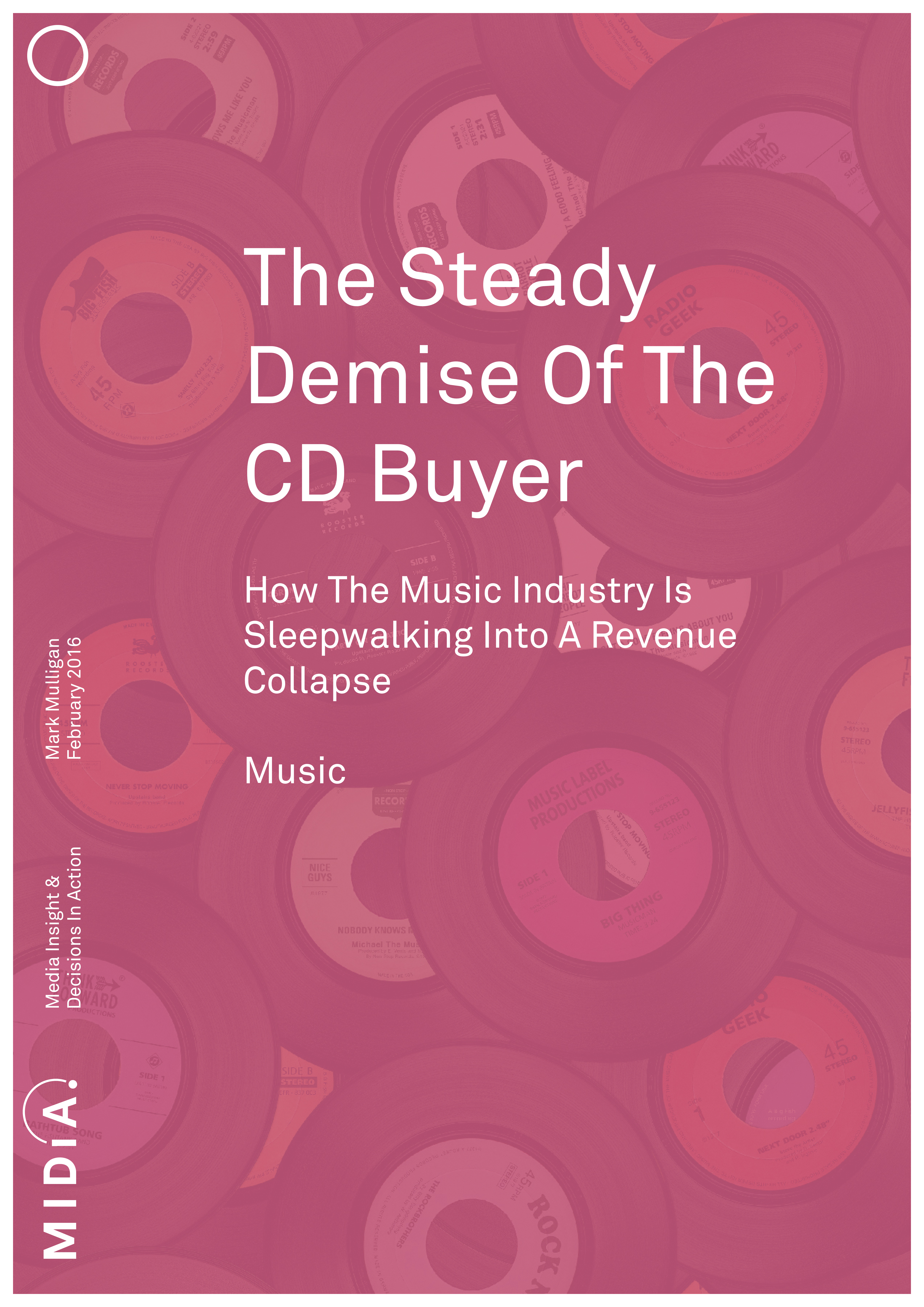The Steady Demise Of The CD Buyer How The Music Industry Is Sleepwalking Into A Revenue Collapse

Get full access to this report and assets
If you are interested this report, or related reports such as Global Music Forecasts 2015-2020 Declining Legacy Formats Cancel Out Streaming Growth and Holiday Gifting Music’s Gifting Digital Double Whammy get in touch today to enquire about a report bundle.
The CD was the catalyst for the record labels’ apogee but now resembles a product strategy time bomb ticking away. With all the momentum of streaming it is tempting to discount CD buyers as an inconvenient legacy of the physical era, a format anomaly that will soon pass. Yet physical music sales generated more than twice the income that streaming did in 2015 and will remain a larger revenue source for the vast majority of the decade. Crucially, CD buyers are becoming an increasingly distinct group of older, less tech adventurous consumers for whom there is no digital transition path. When they stop buying CDs their spending will disappear, leaving a gaping hole in recorded music revenue.
Companies mentioned in this report: Amazon, Netflix, SoundCloud, Spotify, Tesco, Walmart, YouTube
